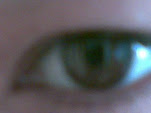I think and write things in my mind, and share it to the world. Hope you can drop by...and will enjoy your reading. Thank you.
About Me

- Leonila
- hi guys i love to write things and everything that for me are interesting
Showing posts with label what is endoscopy for. Show all posts
Showing posts with label what is endoscopy for. Show all posts
Saturday, October 2, 2021
ENDOSCOPY AND ITS’ NURSING INTERVENTION
Endoscopy is a process or procedure to visualize the GI tract of a person. It’s
a fiberoptic instrument with the attachment of lights and camera for
visualization and still pictures. This is modern and less invasive procedure to
diagnose and or collect biopsy. Patient would not undergo surgical procedure
though they will still have to get sedated using anesthesia for a twilight
effect.
There are several types of endoscopies such as:
Arthroscopy – this is an insertion through the skin into the joint to diagnose
arthritis and for rotator tear and repair. Bronchoscopy – an insertion through
the mouth unto the bronchial tubes of the lungs for visualization. This is also
use to stop bleeding and dilating the tube when bleeding and narrowing of tubes
are present. Colonoscopy – this is inserted through rectum and up to the colon.
Use to diagnose colon cancer and removing polyps to prevent colon cancer.
Colposcopy – this is use to detect cervical cancer. Insertion is through vaginal
opening to visualize the cervix. Cystoscopy – is use to for bladder
visualization. Inserted through the urethra unto the bladder that will visualize
the inside and outside part of the bladder to detect possible problem.
ERCP/endoscopic retrograded cholangiopancreatography – use to visualize
the stomach, liver, small intestine and the anatomy of pancreas to check
problems and or cancerous cells. The insertion starts from the mouth, stomach,
small intestine unto the pancreas. EGD / esophagogastroduodenoscopy – this
insertion will start from the mouth and down to esophagus, stomach and into the
duodenum of small intestine. This procedure will visualize the system and check
possible diagnoses and biopsies. Laparoscopy – use to visualize peritoneal
cavity. Insertion made through the belly button over the abdomen to diagnose
infertility and or the removing of appendix. Laryngoscopy – insertion is done
from the mouth unto the larynx to detect any abnormalities or cancer at the
larynx. Mediastinoscopy – is an insertion to visualize the lungs to detect
cancer cells and even the enlargement of lymph nodes. The scope will be inserted
through the chest wall unto the space between the lungs. Proctoscopy- use to
evaluate rectal bleeding, which is inserted through the anus for rectum
evaluation. Thoracoscopy – this insertion is made through the chest wall unto
the lungs for vision and to collect biopsies for cancer diagnoses. This is also
considered useful for the removal of cancer cells, although not all lung cancers
can be treated in this procedure.
Standard procedure
When undergoing endoscopy, the patient is required to have six to eight hours
fasting, and additionally patient who will have a colonoscopy, laxative for
cleaning the colon will be used to remove bowels.
On the other hand: The Sigmoidoscopy
It is another endoscopic procedure to visualize the rectum and sigmoid colon.
When doing the procedure, the patient will be in the knee-chest position on the
specialized table. This procedure will detect tumors, polyps, inflammatory and
infectious diseases, fissures and or hemorrhoids.
Nurse responsibilities before and during procedures
Before the procedure nurses must make it sure that paper works such as consent
form will be signed by the patient before the procedure to avoid law suit of
assault and or battery. Likewise, to educate the patient about endoscopy
including on how it is being done, the purpose of the procedure and its side
effects. Patient must be guided by the nurse to knee-chest position, and tell
the patient to relax and deep breath when feels the urgency to defecate as the
scope passing through. After the procedure it is responsibility of the nurse to
monitor bleeding especially when doing polypectomy or biopsy.
General complication
Because insertion of foreign material is done, perforations through the
structure is expected as well as bleeding and the sedation effects.
References
Lewis, et.al. (2017). Medical Surgical Nursing 10th Ed. Elsevier, Inc. St.
Louis, Missouri
https://www.verywellhealth.com/endoscopy-description-and-preparation-513961
https://brooksidepress.org/giu/lessons/lesson-1-nursing-care-related-to-the-gastrointestinal-system/section-iii-diagnostic-procedures/1-23-endoscopy/?cn-reloaded=1
Subscribe to:
Posts (Atom)
Chronic Stress And Why Most Nurses Are Unhealthy
First of all, having a healthy life style is always a choice because even if how much pressure you are as a nurse; a nurse who choose to sta...

-
Who is Dionisia Pacquiao? She is nobody but not anymore. She is now known to be the mother of pinoy champ, Manny Pacquiao.If people see ...
-
Have you ever tried to be arrested? What was the caused? How you've reacted with the experience? Being nabbed by the authority is not...
-
Everyone has a dream and this is one of my dreams, which is driving my own car. At first I was so in-loved with a Honda Civic with gray or ...


